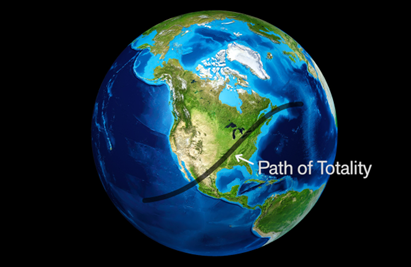 On April 8, North America will experience its second total solar eclipse in seven years. The moon will glide over the surface of our sun, casting a shadow over a swath of Earth below. Along this path, the world will turn dark as night. In cosmic terms, it is unusual that this happens: the moon is about 400 times smaller than the sun, but it is about 400 times closer to us. That means that when these two celestial bodies are aligned, they appear to be the same size in the sky.
On April 8, North America will experience its second total solar eclipse in seven years. The moon will glide over the surface of our sun, casting a shadow over a swath of Earth below. Along this path, the world will turn dark as night. In cosmic terms, it is unusual that this happens: the moon is about 400 times smaller than the sun, but it is about 400 times closer to us. That means that when these two celestial bodies are aligned, they appear to be the same size in the sky.
Skywatchers in Mexico will be the first to see the eclipse on the mainland. From there, the show will slide north, entering the United States through Texas, then proceeding northeast before concluding for most people off the coast of Canada.
It is never safe to look directly at the sun during an eclipse (except for the few moments when the moon has fully obscured its surface). At all other times, watch the event through protective eye equipment, or you can live stream the event at a number of websites, including exploratorium.edu among others. The event will last about two and a half hours, but the totality will last about four minutes.
The map above shows the path of totality — near us on the North Fork, but not directly above
Get Social